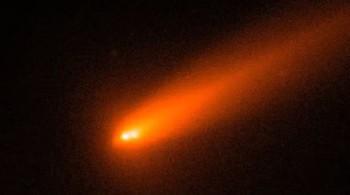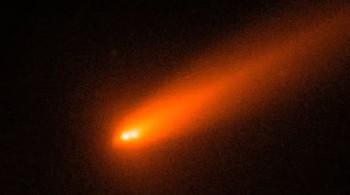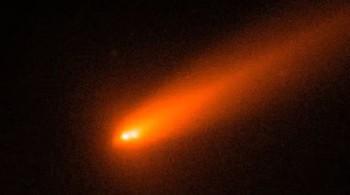
Comet C/2025 K1 (ATLAS) breaks into 3 after coming close to Sun
Comets have long been a source of fascination for astronomers and space enthusiasts alike. These icy bodies from the outer reaches of our solar system have a way of captivating our imagination with their majestic tails and unpredictable behavior. Recently, a comet known as C/2025 K1 (ATLAS) has made headlines after it broke into three pieces following a close encounter with the Sun. This remarkable event was captured by astronomers using Italy’s Copernicus telescope, providing a unique glimpse into the dynamics of cometary fragmentation.
The comet in question, C/2025 K1 (ATLAS), was first discovered in May 2025 by the Asteroid Terrestrial-impact Last Alert System (ATLAS) survey. Initially, it was thought to be a single, intact comet, but as it approached the Sun, astronomers began to notice changes in its structure. On October 8, the comet made its closest approach to the Sun, known as perihelion, and it was at this point that the comet’s nucleus became unstable.
As the comet drew closer to the Sun, the intense heat and gravitational forces began to take their toll on its icy surface. The comet’s nucleus, which is the central, solid part of the comet, started to break apart, resulting in the formation of three distinct pieces. Two large chunks, which are estimated to be around 2,000 km apart, can be seen drifting away from each other, while a smaller third piece is visible to the left of the pair.
The images captured by the Copernicus telescope provide a stunning visual representation of this event. The telescope, which is located in Italy, is equipped with a high-resolution camera that allows astronomers to study the comet’s structure in unprecedented detail. The images show the two main fragments of the comet, which are likely to be the largest pieces of the original nucleus, slowly moving away from each other. The smaller third piece, which is thought to be a smaller fragment that broke off from the main nucleus, can be seen trailing behind the larger chunks.
This event is not only significant because of the comet’s dramatic breakup but also because it provides valuable insights into the internal structure of comets. Comets are thought to be composed of a mixture of ice and rock, with a central nucleus that is surrounded by a cloud of gas and dust. As they approach the Sun, the heat and radiation cause the ices to vaporize, creating a bright tail of gas and dust that can be seen from Earth.
The breakup of Comet C/2025 K1 (ATLAS) is a reminder of the dynamic and unpredictable nature of comets. These objects are often referred to as “dirty snowballs” due to their composition, but they are also incredibly fragile and prone to fragmentation. As they approach the Sun, the intense heat and radiation can cause the comet’s nucleus to become unstable, leading to a breakup or even complete disintegration.
The study of comets like C/2025 K1 (ATLAS) is important not only for our understanding of the solar system but also for the potential risks that these objects pose to Earth. While the chances of a comet impacting our planet are low, it is still a possibility that astronomers and scientists take very seriously. By studying comets and their behavior, we can gain a better understanding of the potential risks and develop strategies for mitigating them.
In conclusion, the breakup of Comet C/2025 K1 (ATLAS) is a remarkable event that provides a unique glimpse into the dynamics of cometary fragmentation. The images captured by the Copernicus telescope are a testament to the power of modern astronomy and the importance of continued research into the solar system. As we continue to explore and study comets like C/2025 K1 (ATLAS), we may uncover even more secrets about these mysterious and fascinating objects.





